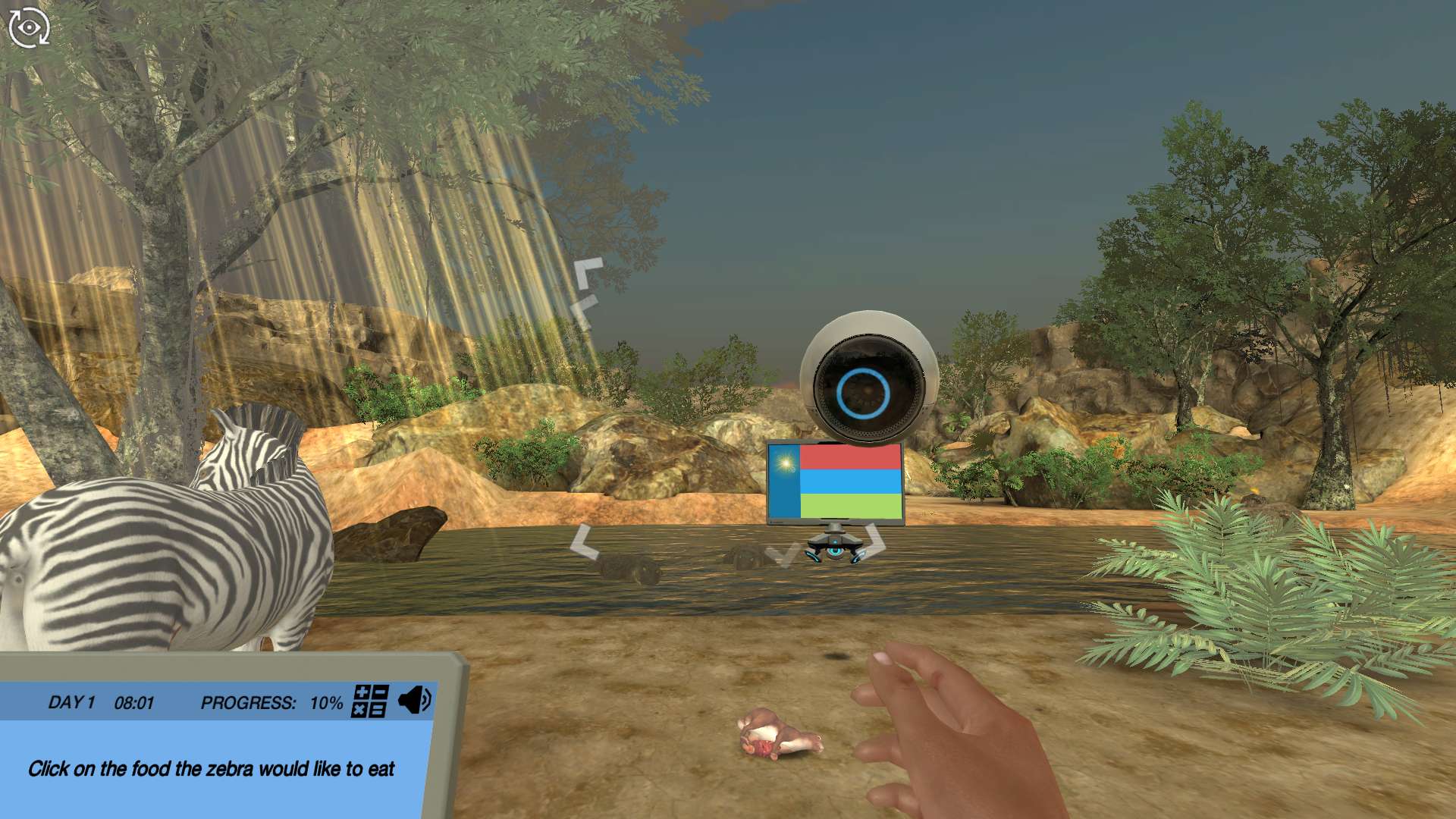Heading 1
Heading 2
Heading 3
Heading 4
Heading 5
Heading 6
Lorem ipsum dolor sit amet, consectetur adipiscing elit, sed do eiusmod tempor incididunt ut labore et dolore magna aliqua. Ut enim ad minim veniam, quis nostrud exercitation ullamco laboris nisi ut aliquip ex ea commodo consequat. Duis aute irure dolor in reprehenderit in voluptate velit esse cillum dolore eu fugiat nulla pariatur.
Block quote
Ordered list
- Item 1
- Item 2
- Item 3
Unordered list
- Item A
- Item B
- Item C
Bold text
Emphasis
Superscript
Subscript
About This Simulation
Experience first-hand how energy is transferred within a food web and between trophic levels. In this simulation, you will guide a zebra towards a feeding ground by interacting with organisms in different trophic levels.
Learning Objectives
- Define trophic levels, food webs and ecological pyramids
- Elaborate on definitions of autotrophic, heterotrophic and mixotrophic organisms.
- Differentiate between food chains and food webs
- Explain how energy flows between different trophic levels and how this impacts ecosystem structure
- Predict how pests and parasites fit into trophic systems
About This Simulation
Lab Techniques
- Trophic pyramid
- Food chain
- Food web
Related Standards
- HS-LS2-3
- Partial alignment: HS-LS2-6
- Unit 8: Ecology
- 4.3 Carbon cycling
- 4.2 Energy flow
- Biology C.2 Communities and ecosystems
- 4.1 Species, communities and ecosystems
Learn More About This Simulation
From photosynthesis to apex predator, get ready for a Labster simulation outside of the lab. In this short simulation, you will explore the different trophic levels and understand a zebra’s place in the food web.
Explore trophic levels in an ecosystem
Receive immediate feedback upon exploring food webs and trophic levels. The mission is simple: help a zebra to its feeding ground. To do this, you will have to hide a crocodile in a food chain, place an elephant in a food trophic pyramid and help a lion to place parasites in a food web.
An academic safari
By the end of this simulation, you will explain the different chains within a food web and relate them to a trophic pyramid. Understand concepts such as heterotroph, mixotroph, and autotroph and use them to explain certain behaviors in the different levels of a trophic pyramid.
Will you be able to safely guide the zebra across a crocodile-filled river?
Boost STEM Pass Rates
Boost Learning with Fun
75% of students show high engagement and improved grades with Labster
Discover Simulations That Match Your Syllabus
Easily bolster your learning objectives with relevant, interactive content
Place Students in the Shoes of Real Scientists
Practice a lab procedure or visualize theory through narrative-driven scenarios


For Science Programs Providing a Learning Advantage
FAQs
Find answers to frequently asked questions.
Heading 1
Heading 2
Heading 3
Heading 4
Heading 5
Heading 6
Lorem ipsum dolor sit amet, consectetur adipiscing elit, sed do eiusmod tempor incididunt ut labore et dolore magna aliqua. Ut enim ad minim veniam, quis nostrud exercitation ullamco laboris nisi ut aliquip ex ea commodo consequat. Duis aute irure dolor in reprehenderit in voluptate velit esse cillum dolore eu fugiat nulla pariatur.
Block quote
Ordered list
- Item 1
- Item 2
- Item 3
Unordered list
- Item A
- Item B
- Item C
Bold text
Emphasis
Superscript
Subscript
Labster can be integrated within a school's LMS (Learning Management System), and students can access it like any other assignment in their LMS. If your Institution does not choose an LMS integration, students will log in to Labster's Course Manager once they have an account created. Your institution will decide the access method during the sales process.
Labster is available for purchase by instructors, faculty, and administrators at education institutions. Purchasing our starter package, Labster Explorer, can be done using a credit card if you are located in the USA, Canada, or Mexico. If you are outside of North America or are choosing a higher plan, please speak with a Labster sales representative. Compare plans.
Labster simulations are created by real scientists and designed with unparalleled interactivity. Unlike point and click competitors, Labster simulations immerse students and encourage mastery through active learning.
Labster supports a wide range of courses at the high school and university level across fields in biology, chemistry and physics. Some simulations mimic lab procedures with high fidelity to train foundational skills, while others are meant to bring theory to life through interactive scenarios.


















